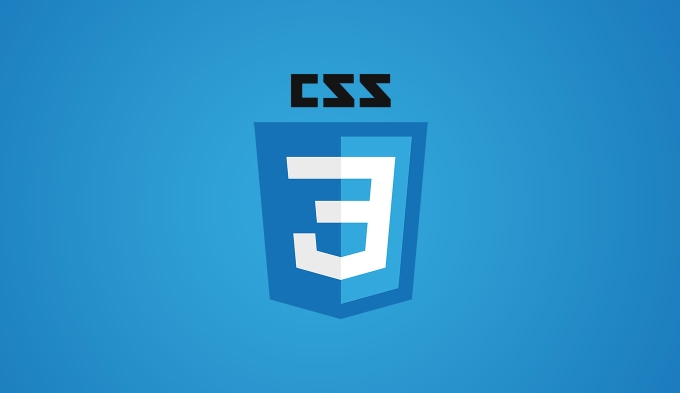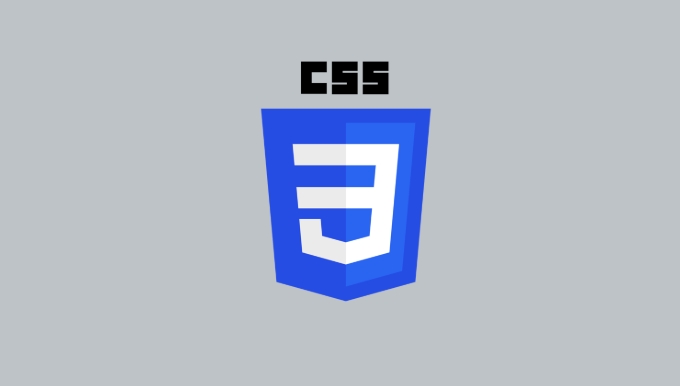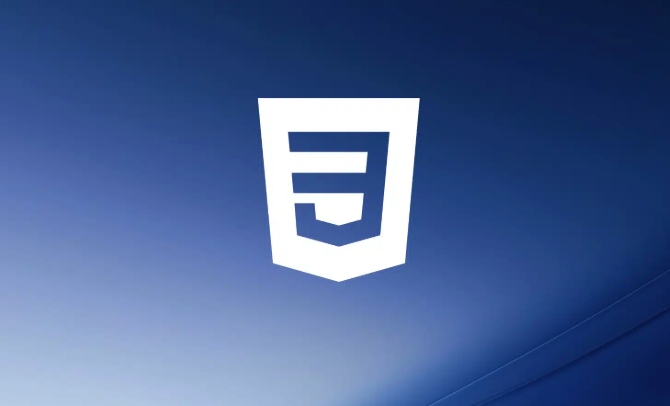Use browser developer tools to check elements to view the styles and possible coverage issues of the actual application; 2. Check CSS syntax errors, such as missing semicolons, spelling errors, etc.; 3. Confirm that the style sheet is correctly linked, no 404 errors or path issues; 4. Pay attention to layout problems such as fold margins and floating not cleared affecting the layout. Debugging CSS requires combining tools and basic checks. Most problems are caused by common errors or overwrite logic.

When your CSS isn't working the way you expect, it can be frustrating. But debugging doesn't have to be a guessing game. With a few solid strategies and tools, most common layout or styling issues become much easier to spot and fix.

1. Use the Browser DevTools to Inspect Elements
This is the first and most powerful step in any CSS debugging process. Right-click on the element you're having trouble with and select “Inspect” (in Chrome, Firefox, Edge, etc.). This opens up the browser's Developer Tools and highlights the HTML and CSS that affect that element.

- Look at the Computed tab to see what styles are actually being applied.
- Check if your custom styles are being overridden by something else.
- You can also temporarily edit styles directly in the DevTools to test changes without touching your actual code.
One common thing people miss: sometimes a style looks like it's not applying, but it's just being overridden by another selector with higher specification.
2. Check for Common Syntax Errors
Even small mistakes in your CSS can cause big problems. These are some of the usual opinions:

- Missing semicolons at the end of declarations
- Unclosed brackets (
}) in a rule block - Misspelled property names or values
- Using invalid values, like
display: grided;
These kinds of errors can break not only the rule they're in, but sometimes the ones that come after it too. If you're not using a linter or code editor with syntax highlighting, consider adding one — it'll catch these before you even run the page.
A quick tip: start from the top of your CSS file and scan down. Sometimes the issue isn't where you think it is — it could be an error earlier that's throwing everything off.
3. Confirm That Your Stylesheet Is Linked Correctly
You might have written perfect CSS, but if the browser can't find or load it, none of it will work.
Check:
- The
<link>tag in your HTML has the correct path to your CSS file. - There are no 404 errors in the Network tab of DevTools.
- The file extension is
.cssand therel="stylesheet"attribute is there.
Also, if you're writing styles inline or in a <style></style> block, make sure those aren't being overridden by external stylesheets loaded later.
This seems basic, but it's surprisingly easy to mix up folder paths or forget to save a file when you're deep into coding.
4. Watch Out for Layout Issues Like Collapse Margins or Floats
Sometimes things don't look right not because of the styles themselves, but how they interact with layout rules.
For example:
- Vertical margins between elements may collapse into one margin instead of stacking.
- Using
floatwithout clearing can cause unexpected wrapping behavior. - Flexbox or Grid layouts might not align items as expected due to default settings like
align-itemsorjustify-content.
If your layout looks off, try resetting or explicitly setting properties to understand what's going on. For instance, setting margin: 1px instead of 0 can help confirm whether collapse margins are affecting your layout.
And don't forget — different browsers can render some layout behaviors slightly differently, especially older ones.
Basically that's it. Debugging CSS is part skill, part patience. Once you get used to checking the basics and using the tools available, most problems turn out to be simpler than they first appear.
The above is the detailed content of How to debug common problems CSS tutorial. For more information, please follow other related articles on the PHP Chinese website!

Hot AI Tools

Undress AI Tool
Undress images for free

Undresser.AI Undress
AI-powered app for creating realistic nude photos

AI Clothes Remover
Online AI tool for removing clothes from photos.

Clothoff.io
AI clothes remover

Video Face Swap
Swap faces in any video effortlessly with our completely free AI face swap tool!

Hot Article

Hot Tools

Notepad++7.3.1
Easy-to-use and free code editor

SublimeText3 Chinese version
Chinese version, very easy to use

Zend Studio 13.0.1
Powerful PHP integrated development environment

Dreamweaver CS6
Visual web development tools

SublimeText3 Mac version
God-level code editing software (SublimeText3)
 CSS tutorial for creating loading spinners and animations
Jul 07, 2025 am 12:07 AM
CSS tutorial for creating loading spinners and animations
Jul 07, 2025 am 12:07 AM
There are three ways to create a CSS loading rotator: 1. Use the basic rotator of borders to achieve simple animation through HTML and CSS; 2. Use a custom rotator of multiple points to achieve the jump effect through different delay times; 3. Add a rotator in the button and switch classes through JavaScript to display the loading status. Each approach emphasizes the importance of design details such as color, size, accessibility and performance optimization to enhance the user experience.
 Addressing CSS Browser Compatibility issues and prefixes
Jul 07, 2025 am 01:44 AM
Addressing CSS Browser Compatibility issues and prefixes
Jul 07, 2025 am 01:44 AM
To deal with CSS browser compatibility and prefix issues, you need to understand the differences in browser support and use vendor prefixes reasonably. 1. Understand common problems such as Flexbox and Grid support, position:sticky invalid, and animation performance is different; 2. Check CanIuse confirmation feature support status; 3. Correctly use -webkit-, -moz-, -ms-, -o- and other manufacturer prefixes; 4. It is recommended to use Autoprefixer to automatically add prefixes; 5. Install PostCSS and configure browserslist to specify the target browser; 6. Automatically handle compatibility during construction; 7. Modernizr detection features can be used for old projects; 8. No need to pursue consistency of all browsers,
 What is the difference between display: inline, display: block, and display: inline-block?
Jul 11, 2025 am 03:25 AM
What is the difference between display: inline, display: block, and display: inline-block?
Jul 11, 2025 am 03:25 AM
Themaindifferencesbetweendisplay:inline,block,andinline-blockinHTML/CSSarelayoutbehavior,spaceusage,andstylingcontrol.1.Inlineelementsflowwithtext,don’tstartonnewlines,ignorewidth/height,andonlyapplyhorizontalpadding/margins—idealforinlinetextstyling
 Styling visited links differently with CSS
Jul 11, 2025 am 03:26 AM
Styling visited links differently with CSS
Jul 11, 2025 am 03:26 AM
Setting the style of links you have visited can improve the user experience, especially in content-intensive websites to help users navigate better. 1. Use CSS's: visited pseudo-class to define the style of the visited link, such as color changes; 2. Note that the browser only allows modification of some attributes due to privacy restrictions; 3. The color selection should be coordinated with the overall style to avoid abruptness; 4. The mobile terminal may not display this effect, and it is recommended to combine it with other visual prompts such as icon auxiliary logos.
 Creating custom shapes with css clip-path
Jul 09, 2025 am 01:29 AM
Creating custom shapes with css clip-path
Jul 09, 2025 am 01:29 AM
Use the clip-path attribute of CSS to crop elements into custom shapes, such as triangles, circular notches, polygons, etc., without relying on pictures or SVGs. Its advantages include: 1. Supports a variety of basic shapes such as circle, ellipse, polygon, etc.; 2. Responsive adjustment and adaptable to mobile terminals; 3. Easy to animation, and can be combined with hover or JavaScript to achieve dynamic effects; 4. It does not affect the layout flow, and only crops the display area. Common usages are such as circular clip-path:circle (50pxatcenter) and triangle clip-path:polygon (50%0%, 100 0%, 0 0%). Notice
 How to create responsive images using CSS?
Jul 15, 2025 am 01:10 AM
How to create responsive images using CSS?
Jul 15, 2025 am 01:10 AM
To create responsive images using CSS, it can be mainly achieved through the following methods: 1. Use max-width:100% and height:auto to allow the image to adapt to the container width while maintaining the proportion; 2. Use HTML's srcset and sizes attributes to intelligently load the image sources adapted to different screens; 3. Use object-fit and object-position to control image cropping and focus display. Together, these methods ensure that the images are presented clearly and beautifully on different devices.
 What are common CSS browser inconsistencies?
Jul 26, 2025 am 07:04 AM
What are common CSS browser inconsistencies?
Jul 26, 2025 am 07:04 AM
Different browsers have differences in CSS parsing, resulting in inconsistent display effects, mainly including the default style difference, box model calculation method, Flexbox and Grid layout support level, and inconsistent behavior of certain CSS attributes. 1. The default style processing is inconsistent. The solution is to use CSSReset or Normalize.css to unify the initial style; 2. The box model calculation method of the old version of IE is different. It is recommended to use box-sizing:border-box in a unified manner; 3. Flexbox and Grid perform differently in edge cases or in old versions. More tests and use Autoprefixer; 4. Some CSS attribute behaviors are inconsistent. CanIuse must be consulted and downgraded.
 Demystifying CSS Units: px, em, rem, vw, vh comparisons
Jul 08, 2025 am 02:16 AM
Demystifying CSS Units: px, em, rem, vw, vh comparisons
Jul 08, 2025 am 02:16 AM
The choice of CSS units depends on design requirements and responsive requirements. 1.px is used for fixed size, suitable for precise control but lack of elasticity; 2.em is a relative unit, which is easily caused by the influence of the parent element, while rem is more stable based on the root element and is suitable for global scaling; 3.vw/vh is based on the viewport size, suitable for responsive design, but attention should be paid to the performance under extreme screens; 4. When choosing, it should be determined based on whether responsive adjustments, element hierarchy relationships and viewport dependence. Reasonable use can improve layout flexibility and maintenance.






